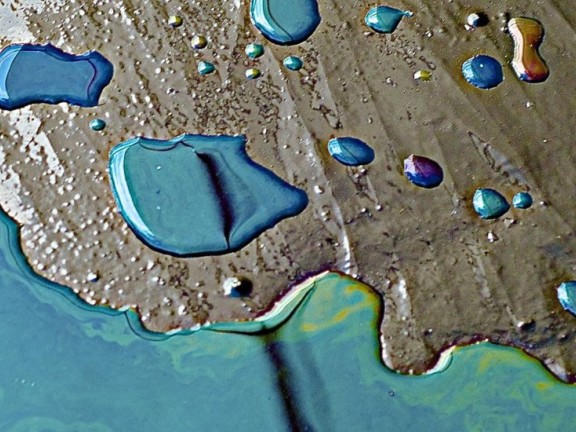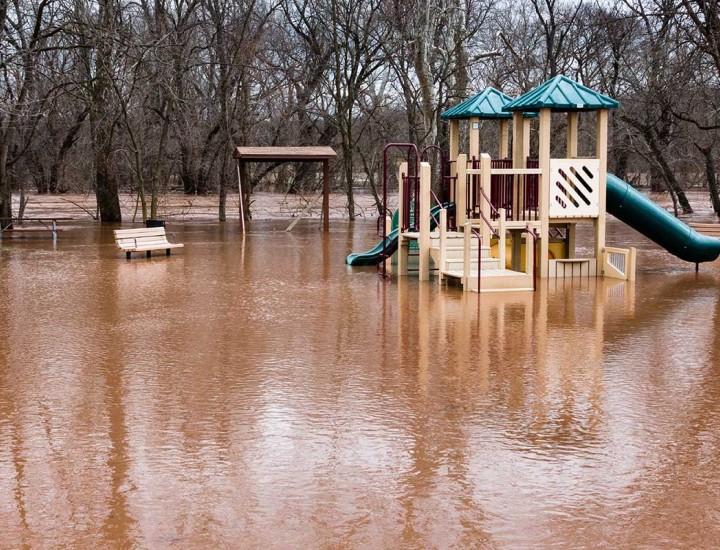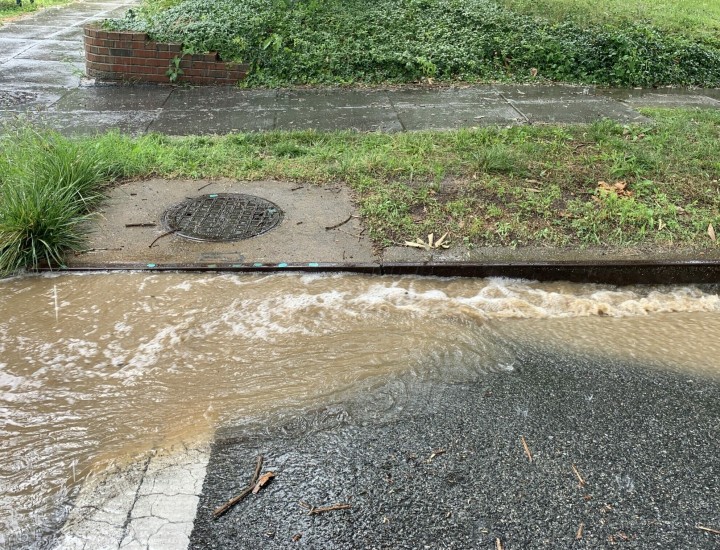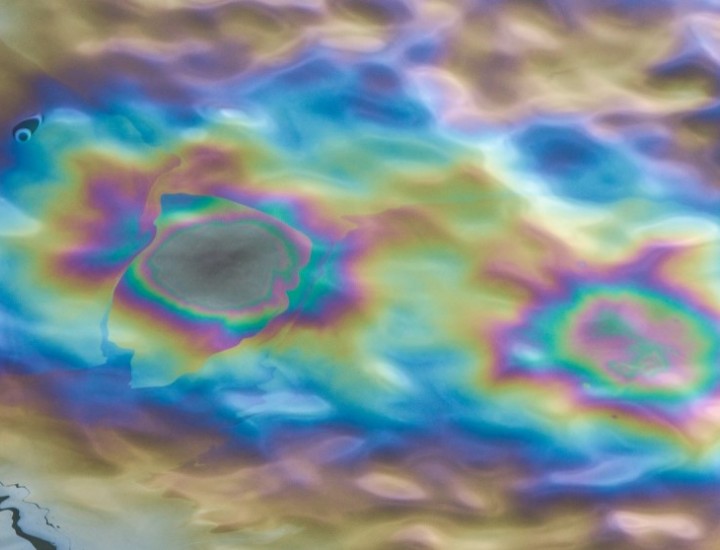Maryland Must Crack Down on Industrial Polluters

Katlyn Schmitt, Center for Progressive Reform, and Natalia Cabrera, Environmental Integrity Project
Maryland is home to more than 1,000 industrial facilities, including landfills, auto salvage yards, hazardous waste treatment, storage sites, and various types of manufacturing and processing plants. When it rains or snows, toxic pollution often runs off these facilities and enters nearby waterways and groundwater resources, negatively impacting aquatic life, nearby communities, and drinking water sources.
The problem — known as industrial stormwater pollution — is dire in Maryland. More industrial facilities are being built in the state, and precipitation intensity is increasing more quickly in the Chesapeake Bay region than elsewhere in the United States, threatening public and environmental health. Low-income people and communities of color are at heightened risk.
The Maryland Department of the Environment (MDE) requires industrial facilities not covered by individual permits to obtain a general permit for industrial stormwater. This permit supports Maryland's commitment to restoring the Bay by 2025 by obligating facilities to take pollution control measures, such as proper storage of chemicals and facility maintenance.
Whether the permit accomplishes these goals largely depends on how well it is enforced.
Without adequate enforcement, industrial facilities are free to run afoul of the general permit’s obligations, allowing more pollution to enter our waterways.
Stronger Enforcement Needed
Unfortunately, MDE is failing in this regard. The enforcement measures it takes to ensure compliance with its general permit are akin to a police officer who issues warnings — but not tickets — for reckless driving. As a result, more people are recklessly driving on the road because there are virtually no consequences for doing so.
This phenomenon is playing out in clean water enforcement. From 2017 through 2020, MDE conducted close to 2,000 inspections of industrial stormwater permittees and found compliance in only about a quarter of them. In 68 percent of inspections, MDE found that industrial facilities were in noncompliance; almost half of inspections were of repeat offenders or facilities that had previously been inspected and found noncompliant. In one case, an auto salvage yard in Howard County, MDE issued 13 findings of noncompliance over the three-year span.
Yet even though 1,350 of MDE’s inspections found noncompliance, the agency offered compliance assistance in a tiny fraction (only 14 of them) and required corrective action in only 30. MDE brought 14 formal enforcement actions during the period, only six of which were against facilities found to be noncompliant as a result of an inspection.
In short, the lion — as Baltimore waterkeeper Alice Volpitta put it — is missing its teeth.
“In Baltimore,” Volpitta said, “inadequate enforcement against repeat offenders only serves to incentivize bad actors who take advantage of a broken system. Our local waterways and our overburdened communities are paying the price, a price which these polluters only see as the cost of doing business.”
She’s right: The lack of significant penalties, on-the-spot fines, and other consequences has preserved the status quo for far too long. This systematic failure has given peace of mind to polluters to continue to violate environmental permits and laws.
Unenforceable Terms
One reason for MDE’s failure to effectively enforce permit noncompliance is the permit’s vague terminology and narrative, rather than numeric, standards (like requiring discharges to be “controlled as necessary to meet applicable water quality standards”).
It’s the environmental equivalent of a speed limit urging people to “drive slowly enough to ensure that no harm results to the community.” A worthy goal, of course, but the vague language makes it impossible to understand and enforce the rules.
The same problem arises with the general permit. Without concrete, measurable limits and monitoring, industrial polluters can’t know when they are successfully controlling discharge. The permit is especially challenging given that its standards apply to receiving water, not the discharge itself. Vague language in other parts of the permit, and its delegation to permit holders to determine whether their actions are appropriate, further weaken it.
An unenforceable permit contributes to low enforcement levels, which results in permit noncompliance. This, in turn, leads to the worst environmental degradation and community harm in already overburdened areas, which are disproportionately communities of color.
MDE is currently in the process of finalizing its general permit for industrial stormwater. The permit is expected in the coming months. MDE must improve the final permit’s language to ensure it has a clear directive and robust enforcement authority to pursue bad actors. To be enforceable, the permit must clearly communicate actions that violate standards. Specific, measurable, and numeric rules and standards will make it easier for MDE to enforce the permit; for permit holders to know when they are complying; and for all Marylanders to thrive.
For more information on the disproportionate impacts of industrial stormwater borne by communities of color, see this Bay Journal op-ed here. To learn more and join the effort to stop this chain and pressure MDE to make the permit more enforceable, check out our Maryland Stormwater Awareness and Advocacy Week from September 27 to October 1.


